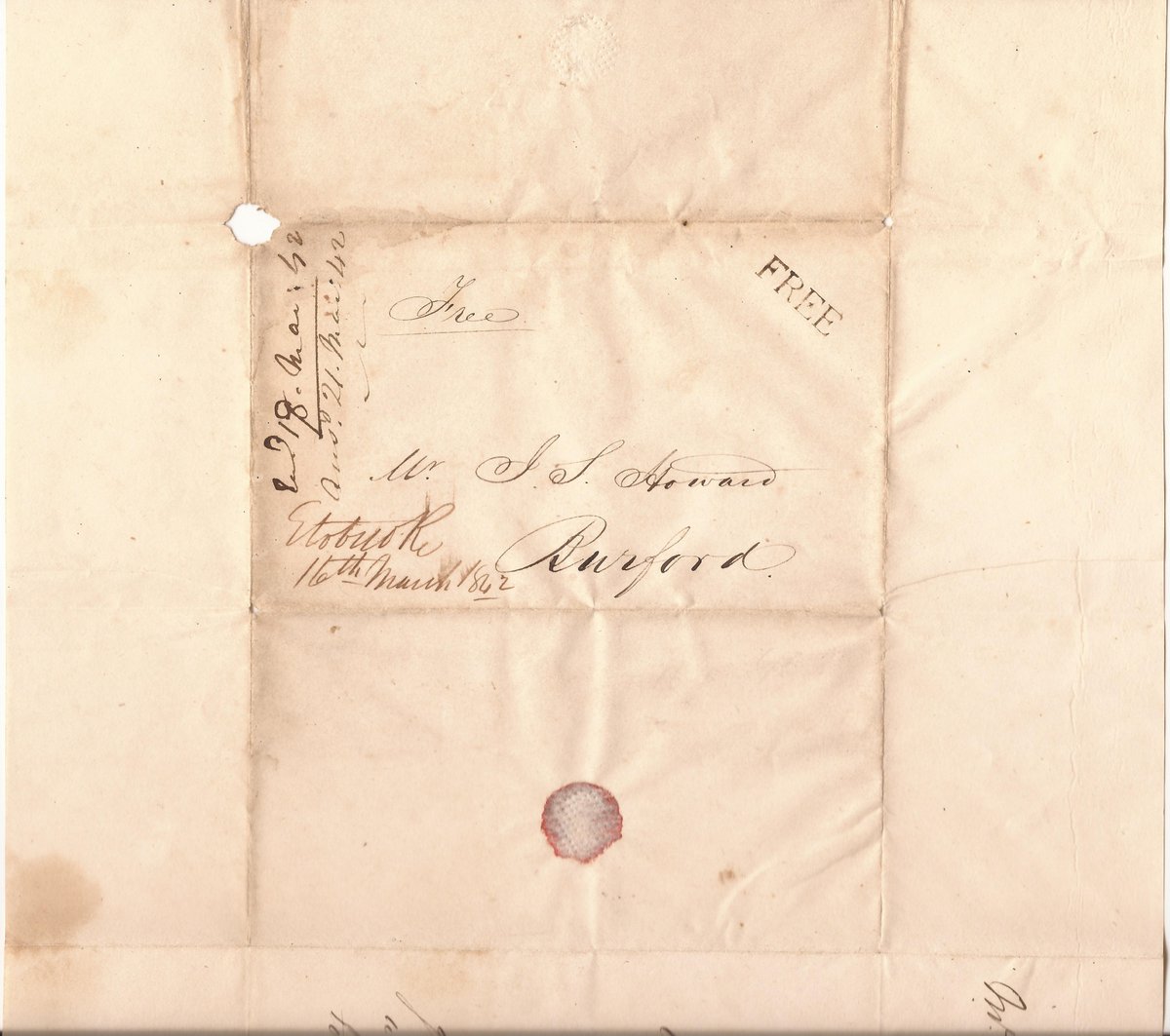Let& #39;s talk early 19th century covers (letters covers that is)!
Before the wide-spread use of envelopes, letter sheets were folded to become their own self-contained envelopes. The folded outer sheet of the letter would bear the mailing address and various postal markings.
Before the wide-spread use of envelopes, letter sheets were folded to become their own self-contained envelopes. The folded outer sheet of the letter would bear the mailing address and various postal markings.
Prior to the use of postage stamps, rates were marked directly on the cover. The PAID ink stamp indicates that a letter had been paid for in advance, serving the same purpose as a stamp today. This mark is combined with the postage rate written in the top right corner in script.
Correspondence relating to Post Office business could be sent free (note the FREE stamp). At various times, Postmasters, Members of Parliament, government departments, and certain officials could also send mail for free, despite grumblings about lost revenue and potential abuse.
Next, notice the circular stamp called a cancel. Like today, cancels includes the date and origin of the letter (and could also include rerouting locations).
Finally, check out this cover that is also marked TOO LATE, meaning that the letter came to the Post Office after the mailbag was sealed and ready to go. In that case, a supplementary bag could be made up and sent along with the regular mail, all for an extra fee, of course.

 Read on Twitter
Read on Twitter






